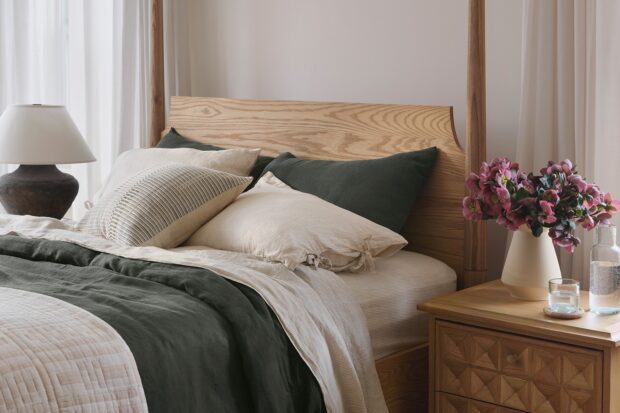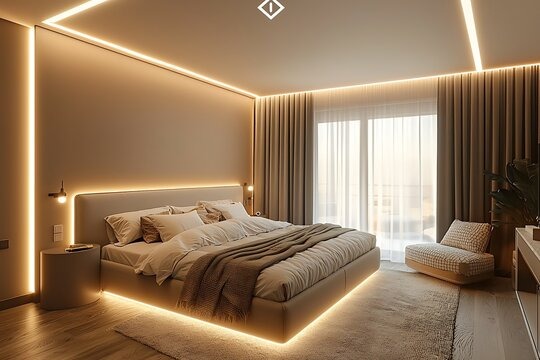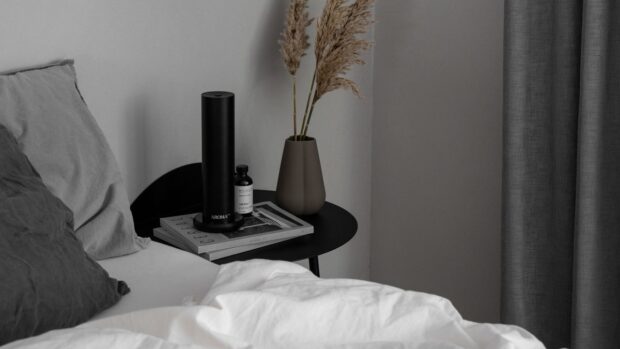Some spaces are designed to impress. Others are made to be lived in. The bedroom should always fall into the second category. It’s where you greet your mornings and retreat at night—so how it feels matters more than how it photographs.
You don’t need a renovation budget or an interior design degree to make your sleeping space feel special. What you do need is an eye for the right accessories—the ones that speak to comfort, personality, and calm. These small, thoughtful details can completely change how your bedroom supports you.
Start With Layers: Texture Makes the Mood

If your bed doesn’t invite you in, something’s missing. Texture is often the culprit. A space with flat surfaces and little contrast tends to feel cold. When you start layering fabrics, you instantly soften the environment and create visual warmth—even in minimal spaces.
Some easy layering ideas:
- A quilt folded across the bottom of the bed
- A velvet or bouclé pillow mixed with crisp percale sheets
- Linen curtains that let in filtered light
- A soft rug beside the bed so your feet meet comfort first
Texture is emotional. It tells your body to slow down, rest, and stay awhile.
Add a Personalized Piece (or Two)
A sleeping space becomes yours the moment it includes something personal. It doesn’t need to be loud or bold. In fact, it’s often the subtle touches that make the biggest emotional impact—a print that means something to you, or a pillowcase no one else has.
This is where custom accessories come in. One practical and cozy favorite? Custom body pillow cases where you can print a calming pattern, an anime character you love, or even a personal photo. It’s a small addition, but it instantly personalizes your space in a way that store-bought items can’t.
More personal details to consider:
- A book you’re genuinely reading on your nightstand
- A framed snapshot from a quiet moment (not just vacation shots)
- A candle with a scent you associate with home
- One handmade item, like a knitted throw or a ceramic tray
These aren’t just decorations—they’re memory keepers in disguise.
Don’t Overlook the Lighting

If you’ve ever tried relaxing under harsh overhead bulbs, you know: light can make or break a bedroom. The trick is in layering the light—just like you layer textures.
Try mixing:
- A warm bedside lamp for reading
- Soft string lights or fairy lights tucked behind a headboard
- LED strips under shelves for ambient glow
- Smart bulbs that shift tone from day to night
Good lighting helps your brain wind down. It signals that it’s time to unplug and turn inward. Plus, it adds a visual softness that overhead fixtures just can’t offer.
Choose Accessories That Work While They Wow
Some of the best bedroom upgrades are both beautiful and practical. When space is limited—or clutter stresses you out—it helps to choose accessories that serve more than one purpose.
Here’s what that might look like:
| Item | Function | Style Bonus |
| Storage bench | Holds linens, adds seating | Adds structure to the foot of bed |
| Floating shelves | Organizes books and decor | Keeps floors clear, looks modern |
| Decorative baskets | Hides cords or blankets | Adds warmth and texture |
| Nightstand trays | Keeps small items tidy | A polished touch on open surfaces |
These pieces prove that you don’t have to sacrifice style for function—or the other way around.
How a Soft Scent Can Shift the Whole Mood

We talk so much about how a room looks, we forget how much it matters how it smells. Your bedroom’s scent affects how your body relaxes, how you breathe, and how ready your mind is to drift off.
Some easy scent options:
- Linen spray with lavender or cedarwood
- A small diffuser near the bed
- Soy candles with calming, subtle notes
- Dried eucalyptus tied near the window
The key is to avoid anything too strong. You want just enough aroma to feel soothed—not overwhelmed.
Let Silence Speak (Or Choose Your Sounds)
Restful sleep doesn’t only depend on soft pillows and blackout curtains. The soundscape of your bedroom plays a powerful role.
Some people need silence. Others sleep better with consistent white noise. And for some, a soft playlist of ambient tones or instrumental jazz creates the perfect transition to sleep.
Ideas to support a sound-friendly sleeping space:
- A compact white noise machine for consistent background sound
- Heavy curtains to muffle outdoor noise
- Soft rugs that naturally dampen echoes
- A Bluetooth speaker tucked on a shelf for soothing nighttime playlists
If you’re not sure what works best for you, experiment. You might be surprised at what your body responds to.
Beauty in the Everyday
There’s a quiet kind of joy that comes from making a space your own—not in the curated, performative way, but in the “this helps me rest” kind of way. Maybe it’s the pillowcase that feels like you, or the soft light that calms your thoughts before bed. Maybe it’s the scent of a candle you always burn when journaling.
These small things are what transform a sleeping space into a resting space.
You don’t have to get it all perfect in one day. Build slowly. Choose with intention. And remember: transformation isn’t always loud. Sometimes, it’s in the hush of clean sheets, the glow of a lamp, or the way your room smells like sleep.




